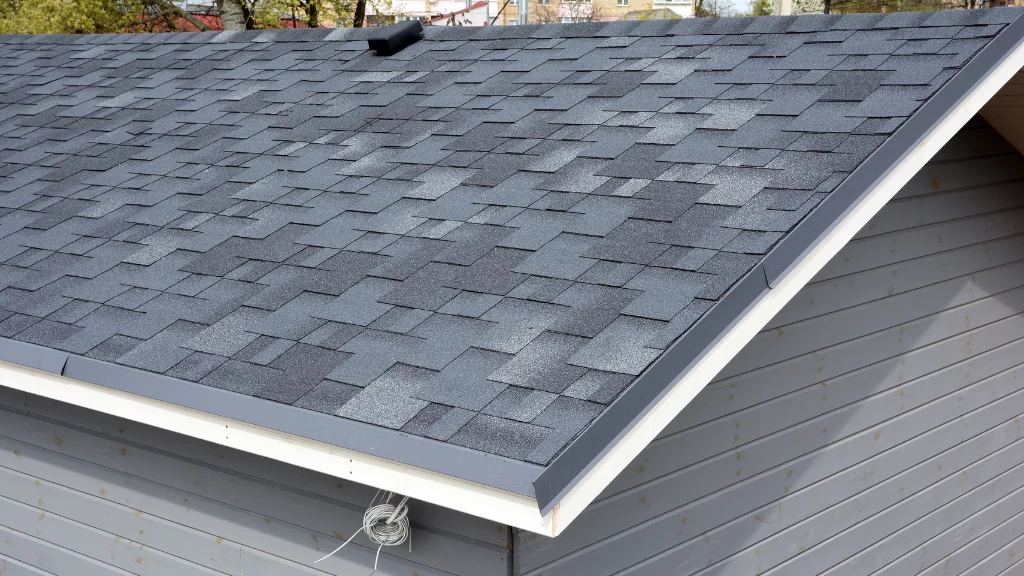
Modified bitumen roofing is a popular choice for flat or low-slope roofs, thanks to its durability and versatility. However, like any roofing material, it comes with its own set of pros and cons that you should consider before making a decision.
In this article, we’ll take a closer look at the advantages and disadvantages of modified bitumen roofing. We’ll explore the benefits of its multi-layered design and long lifespan, as well as some of the potential drawbacks, such as the cost and installation process.
Whether you’re a contractor looking for a new roofing option or a homeowner considering a replacement, our guide has got you covered. So, let’s dive in and learn more about the pros and cons of modified bitumen roofing!
Pros of Modified Bitumen Roofing
If you are considering Modified Bitumen Roofing for your home or business, it is important to know the benefits that come with it. Here are some of the advantages of Modified Bitumen Roofing:
Durable
Modified Bitumen Roofing is designed to be durable, making it an ideal choice for areas with harsh weather conditions. It can withstand extreme temperatures, heavy rain, snow, and hail.
The roofing material is also tear-resistant, which means it can last for years without requiring any repairs.
Easy to Install
Modified Bitumen Roofing is easy to install, which means you can save money on labor costs. The roofing material comes in rolled sheets that are up to 36 feet long, making it easy to cover large areas quickly.
Additionally, if the roof does get damaged, it can be repaired quickly and efficiently.
Versatile
Modified Bitumen Roofing is versatile and can be used on a variety of roof types, including flat, low-slope, and pitched roofs. This makes it a great choice for buildings with different roof designs.
Weather Resistance
Modified Bitumen Roofing is designed to be weather-resistant, which means it can withstand harsh weather conditions. It is also heat-resistant, which means it can keep your building cool during the summer months.
Impact Resistance
Modified Bitumen Roofing is designed to be impact-resistant, which means it can withstand heavy objects falling on it. This makes it a great choice for buildings located in areas with high winds or heavy snow.
UV Resistant
Modified Bitumen Roofing is UV-resistant, which means it can withstand the sun’s radiation. This makes it a great choice for buildings located in areas with high sun exposure.
Low Maintenance
Modified Bitumen Roofing requires minimal maintenance, which means you can save money on upkeep costs. It does not require regular cleaning or inspections, making it a great choice for busy homeowners or business owners.
Cost-Effective
Modified Bitumen Roofing is cost-effective, making it a great choice for homeowners or business owners on a budget. It is the least expensive type of roofing to apply, and there is no tear-off process required, which means disposal costs are minimal.
Reflectivity
Modified Bitumen Roofing is reflective, which means it can help reduce energy costs. It reflects the sun’s rays, which can help keep your building cool during the summer months, reducing the need for air conditioning.
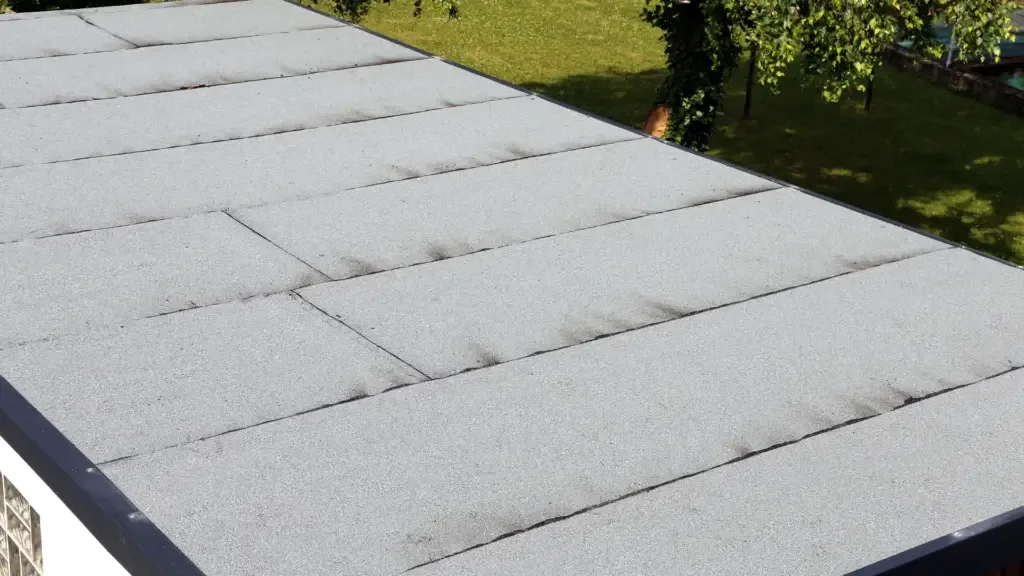
Cons of Modified Bitumen Roofing
When considering modified bitumen roofing, it’s important to weigh the potential disadvantages against the benefits. Here are some cons to keep in mind:
Vulnerable to Ponding
One of the biggest risks with modified bitumen roofing is that it can be vulnerable to ponding. If your roof doesn’t have proper drainage, water can collect on the surface and cause damage over time. This can lead to leaks and other issues that can be costly to repair.
Foul Odor
Modified bitumen roofing is applied using a heated torch method, which can release foul odors during installation. While the odor typically dissipates within a few days, it can be unpleasant to deal with in the meantime.
Torch Fumes
In addition to the unpleasant odor, the heated torch method used to install modified bitumen roofing can also release harmful fumes. These fumes can cause eye and respiratory irritation, as well as nausea.
It’s important to take proper safety precautions during installation to minimize exposure to these fumes.
Puncture and Scuff
Another potential downside to modified bitumen roofing is that it can be more vulnerable to punctures and scuffs than other roofing materials. This can be a concern if you have trees or other debris near your roof that could cause damage.
Expensive
Modified bitumen roofing can also be more expensive than other roofing materials, which can be a concern for those on a tight budget. While the cost can be offset by the durability and longevity of the material, it’s important to factor in the upfront cost when making your decision.
Cracking
Over time, modified bitumen roofing can also be prone to cracking. This can be caused by a variety of factors, including temperature changes and exposure to the elements.
While regular maintenance can help prevent cracking, it’s important to keep in mind that this is a potential risk with this type of roofing.
In summary, while modified bitumen roofing offers many benefits, it’s important to keep these potential downsides in mind when making your decision. By weighing the pros and cons carefully, you can make an informed decision about whether this type of roofing is right for you.
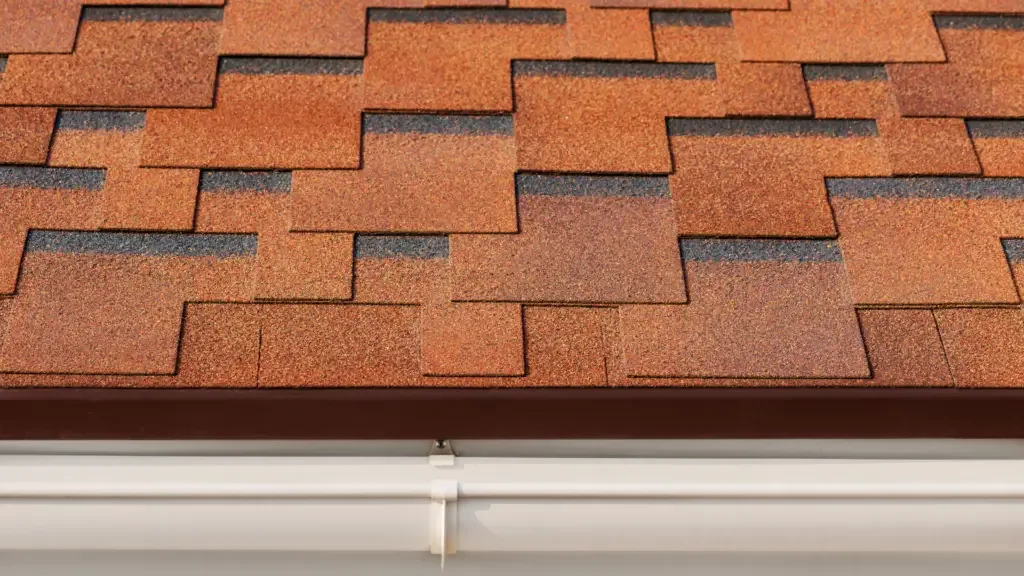
Modified Bitumen Roofing Materials
Modified bitumen roofing is a type of roofing material that is made by applying layers of modified asphalt to a reinforcement fabric. The reinforcement fabric can be made from either fiberglass or polyester, or a combination of the two.
The finished mod bit sheets are typically 39 inches (1 meter) wide and are sold in rolls. The rolls are then cut to fit the size of the roof. Modified bitumen roofing is available in two types of materials: SBS and APP.
SBS Modified Bitumen Roofing Materials
SBS stands for Styrene-Butadiene-Styrene, which is a type of synthetic rubber. SBS modified bitumen roofing materials are more flexible and durable than APP materials.
They are also more resistant to extreme weather conditions and can last up to 20 years.
APP Modified Bitumen Roofing Materials
APP stands for Atactic Polypropylene, which is a type of plastic. APP modified bitumen roofing materials are less flexible than SBS materials, but they are more resistant to UV rays and can last up to 15 years.
Cap Sheet
Cap sheet is a layer of granulated material that is applied to the top of the modified bitumen roofing material. The granulated material can be made from either ceramic or crushed rock.
The cap sheet provides an extra layer of protection against the elements and can also improve the appearance of the roof.
Asphalt
Asphalt is the main component of modified bitumen roofing material. It is a sticky, black, and highly viscous liquid or semi-solid form of petroleum. Asphalt is used in roofing because of its waterproofing and adhesive properties.
Fiberglass
Fiberglass is a type of reinforcement fabric that is used in the production of modified bitumen roofing materials. It is made from fine glass fibers that are woven together into a fabric. Fiberglass is lightweight, strong, and resistant to moisture and fire.
Polyester
Polyester is another type of reinforcement fabric that is used in the production of modified bitumen roofing materials. It is made from synthetic fibers that are woven together into a fabric.
Polyester is strong, durable, and resistant to UV rays.
Plastic Polymers
Plastic polymers are used in the production of APP modified bitumen roofing materials. They are added to the asphalt to improve its resistance to UV rays and to make it less flexible.
In summary, modified bitumen roofing materials are a popular choice for flat roofs because of their durability, flexibility, and resistance to extreme weather conditions. They are made from a combination of asphalt and reinforcement fabric, which can be made from fiberglass or polyester.
Modified bitumen roofing materials are available in two types: SBS and APP, and cap sheet is a layer of granulated material that is applied to the top of the roofing material to provide extra protection.
Modified Bitumen Roofing Systems
If you are looking for a durable and long-lasting roofing system, Modified Bitumen Roofing Systems might be the perfect choice for you. This type of roofing system is made of asphalt and reinforced with modifiers and solvents that make it more flexible and resistant to extreme weather conditions.
Modified Bitumen Roofing Systems are available in different types, including:
- SBS (Styrene Butadiene Styrene) Modified Bitumen Roofing Systems: This type of roofing system is made of a blend of asphalt and rubber, which makes it more flexible and resistant to cracking. It is commonly used in areas with extreme weather conditions.
- APP (Atactic Polypropylene) Modified Bitumen Roofing Systems: This type of roofing system is made of a blend of asphalt and plastic, which makes it more durable and resistant to UV rays. It is commonly used in areas with high temperatures.
Modified Bitumen Roofing Systems can be installed using different methods, including:
- Torch-Applied Method: This method involves heating the roofing material with a torch and then bonding it to the roof deck.
- Cold-Applied Method: This method involves using adhesives to bond the roofing material to the roof deck.
Modified Bitumen Roofing Systems are compatible with different roofing systems, including:
- Built-Up Roofing (BUR): This type of roofing system is made of multiple layers of asphalt and felt. Modified Bitumen Roofing Systems can be used as a top layer in BUR systems to provide additional protection against extreme weather conditions.
- Single-Ply Roofing: This type of roofing system is made of a single layer of roofing material, such as EPDM or TPO. Modified Bitumen Roofing Systems can be used as an underlayment in single-ply roofing systems to provide additional protection against leaks and punctures.
- Multi-Ply Roofing: This type of roofing system is made of multiple layers of roofing material, such as BUR or Modified Bitumen. Modified Bitumen Roofing Systems can be used as a top layer in multi-ply roofing systems to provide additional protection against extreme weather conditions.
- Mopped Asphalt Roofing: This type of roofing system is made of multiple layers of asphalt and felt that are mopped onto the roof deck. Modified Bitumen Roofing Systems can be used as a top layer in mopped asphalt roofing systems to provide additional protection against leaks and punctures.
Overall, Modified Bitumen Roofing Systems are a great choice for commercial and industrial buildings that require a durable and long-lasting roofing system. They are easy to install and maintain, and they provide excellent protection against extreme weather conditions and other environmental factors.
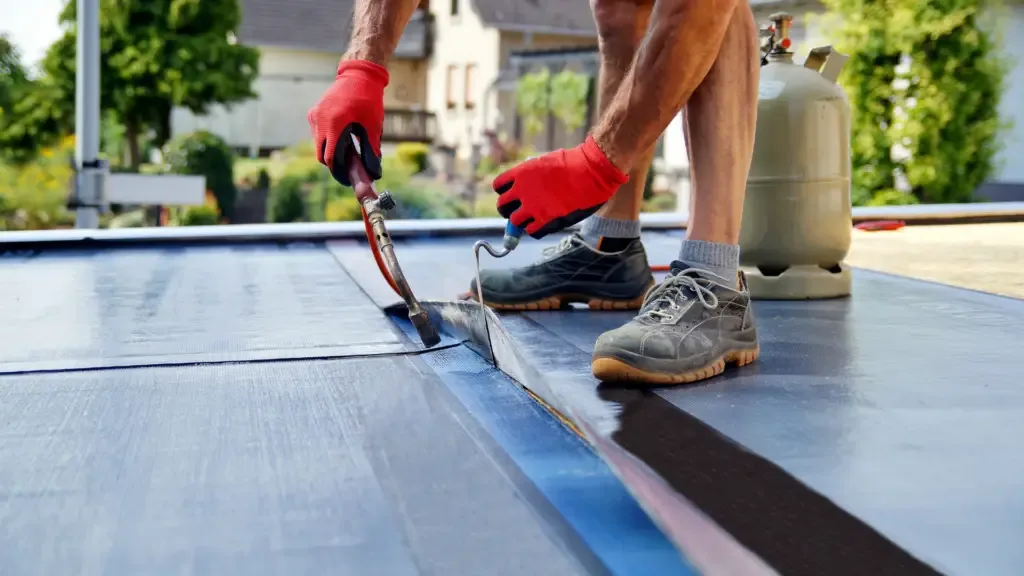
Commercial and Residential Applications
Modified bitumen roofing is a popular choice for both commercial and residential applications. It is a flexible, durable, and long-lasting roofing system that can withstand harsh weather conditions and foot traffic.
Here are some key factors to consider when choosing modified bitumen roofing for your commercial or residential building.
Commercial Applications
Modified bitumen roofing is an excellent choice for commercial buildings, especially those with flat or low-slope roofs. Commercial buildings require a roofing system that is strong, durable, and easy to maintain.
Modified bitumen roofing meets all of these requirements and more. Here are some of the benefits of using modified bitumen roofing for commercial applications:
- Fire-resistant: Modified bitumen roofing is fire-resistant, which is important for commercial buildings that house valuable equipment and materials.
- Easy to maintain: Modified bitumen roofing is easy to maintain, which is important for commercial buildings that require regular inspections and repairs.
- Cost-effective: Modified bitumen roofing is a cost-effective option for commercial buildings, especially when compared to other roofing systems such as metal or tile.
- Energy-efficient: Modified bitumen roofing can help reduce energy costs by reflecting sunlight and reducing heat absorption.
Residential Applications
Modified bitumen roofing is also a great choice for residential applications. It is a versatile roofing system that can be used on a variety of residential buildings, from single-family homes to multi-unit dwellings. Here are some of the benefits of using modified bitumen roofing for residential applications:
- Durable: Modified bitumen roofing is durable and can last for up to 20 years or more with proper maintenance.
- Easy to install: Modified bitumen roofing is easy to install and can be applied directly to the roof deck.
- Versatile: Modified bitumen roofing can be used on a variety of residential buildings, from small cottages to large estates.
- Energy-efficient: Modified bitumen roofing can help reduce energy costs by reflecting sunlight and reducing heat absorption.
Whether you are a commercial building owner or a homeowner, modified bitumen roofing is a great choice for your roofing needs. It is a cost-effective, durable, and long-lasting roofing system that can provide years of reliable protection for your building or home.
Style Options
When it comes to Modified Bitumen Roofing, you have multiple style options to choose from. The granules on the cap sheets can vary to match any color of shingles.
This means that you can customize your roofing to match the exterior of your home or building.
The cap layer of Modified Bitumen Roofing is like a roll of one giant shingle. This means that you can achieve a uniform and sleek look for your roof.
Additionally, the cap layer can be smooth or granulated, depending on your preference.
Another style option for Modified Bitumen Roofing is the use of reflective coatings. These coatings can help to reduce energy costs by reflecting sunlight and heat away from your roof.
This can be especially beneficial in warmer climates.
Overall, the style options for Modified Bitumen Roofing are versatile and customizable. With a range of colors, textures, and coatings to choose from, you can achieve the look and functionality that you need for your home or building.
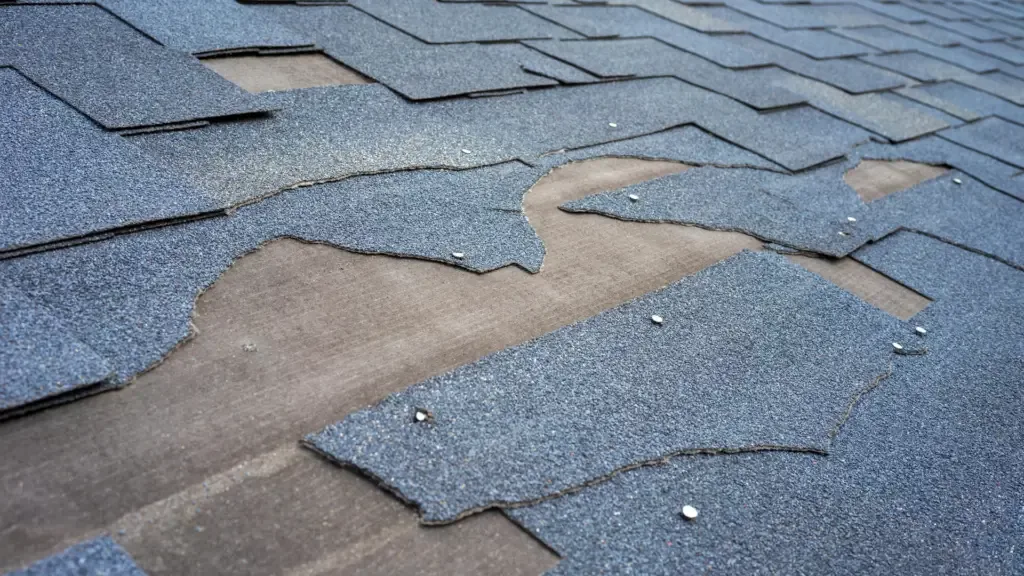
Installation and Application Methods
When it comes to Modified Bitumen Roofing, there are several installation and application methods available. Each method has its own pros and cons, and you should select the one that best suits your needs.
Torch-Down Method
The torch-down method is the most popular and widely used method for installing modified bitumen roofing. In this method, the modified bitumen sheets are heated with a propane torch and then rolled onto the roof surface.
This method creates a strong bond between the roofing material and the roof surface, making it resistant to foot traffic and severe weather conditions.
However, the torch-down method can be dangerous and requires proper safety precautions. The torch fumes can be harmful, and the roofing material can easily catch fire if not handled properly.
It is recommended that you hire a professional roofing contractor who is experienced in this method.
Self-Adhesive Method
The self-adhesive method is becoming increasingly popular due to its ease of installation and safety features. In this method, the modified bitumen sheets come with an adhesive backing that sticks to the roof surface without the need for heat. This method is ideal for DIY projects and small roofs.
However, the self-adhesive method is not suitable for roofs with foot traffic or heavy equipment. The adhesive backing can weaken over time, leading to leaks and other issues.
Cold Adhesive Method
The cold adhesive method is similar to the self-adhesive method, but instead of an adhesive backing, a cold adhesive is applied to the roof surface and the modified bitumen sheets. This method is ideal for roofs with foot traffic and heavy equipment, as it creates a strong bond between the roofing material and the roof surface.
However, the cold adhesive method requires more time and effort than the other methods, as the adhesive needs to be applied carefully and evenly.
Seams
Modified bitumen roofing sheets come in various sizes, but if your roof is larger than the sheet size, you will need to join two or more sheets together to cover the entire roof. The seams can be joined by heat welding, cold welding, or adhesive.
Heat welding creates a strong bond between the sheets, but it can be dangerous and requires proper safety precautions. Cold welding and adhesive are safer and easier to use, but they may not create as strong a bond as heat welding.
Foot Traffic
If your roof is going to have foot traffic, it is important to select a modified bitumen roofing material that is resistant to foot traffic. The torch-down method creates a strong bond between the roofing material and the roof surface, making it resistant to foot traffic.
Self-adhesive and cold adhesive methods are not as strong, and the roofing material can easily get damaged if there is too much foot traffic.
In summary, the installation and application methods for modified bitumen roofing vary, and each method has its own pros and cons. It is important to select the method that best suits your needs and to take proper safety precautions when handling the roofing material.
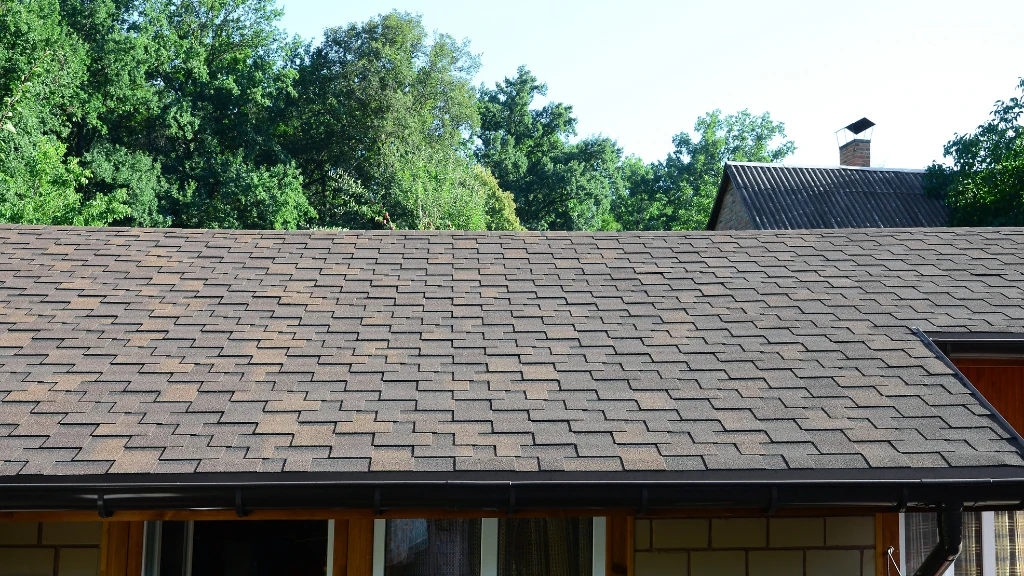
Lifespan and Maintenance
When it comes to Modified Bitumen roofing, the lifespan of the roof can vary depending on several factors. Typically, a Modified Bitumen roof can last between 10-20 years.
However, with proper maintenance and care, you can extend the life of your Modified Bitumen roof up to 30 years or more.
One of the key factors that affect the lifespan of your Modified Bitumen roof is the quality of roofing materials used. The better the quality of the materials, the longer your roof will last.
Additionally, the workmanship and architectural design of your roof can also impact its lifespan.
It is important to note that regular maintenance plays a crucial role in extending the lifespan of your Modified Bitumen roof. Regular inspections, cleaning, and repairs can prevent damage and prolong the life of your roof.
It is also important to ensure that your roof has proper drainage systems in place to prevent standing water and ponding, which can cause damage to the roof over time.
Another factor to consider when it comes to Modified Bitumen roofing is its durability. Modified Bitumen roofs are known for their resilience and ability to withstand harsh weather conditions.
They are also puncture and tear-resistant, making them a reliable choice for low slope roofs.
In terms of insulation, Modified Bitumen roofs provide excellent thermal insulation, which can help reduce energy costs and increase energy efficiency. They are also nature-friendly, as they are made from recycled materials and can be recycled at the end of their lifespan.
When it comes to price, Modified Bitumen roofing systems are a cost-effective option compared to other roofing materials. They are also a reliable and waterproof material, making them a popular choice for commercial and industrial buildings.
In summary, the lifespan of your Modified Bitumen roof can be extended with proper maintenance and care. With its durability, insulation, and nature-friendly properties, Modified Bitumen roofing is a reliable and cost-effective choice for low slope roofs.
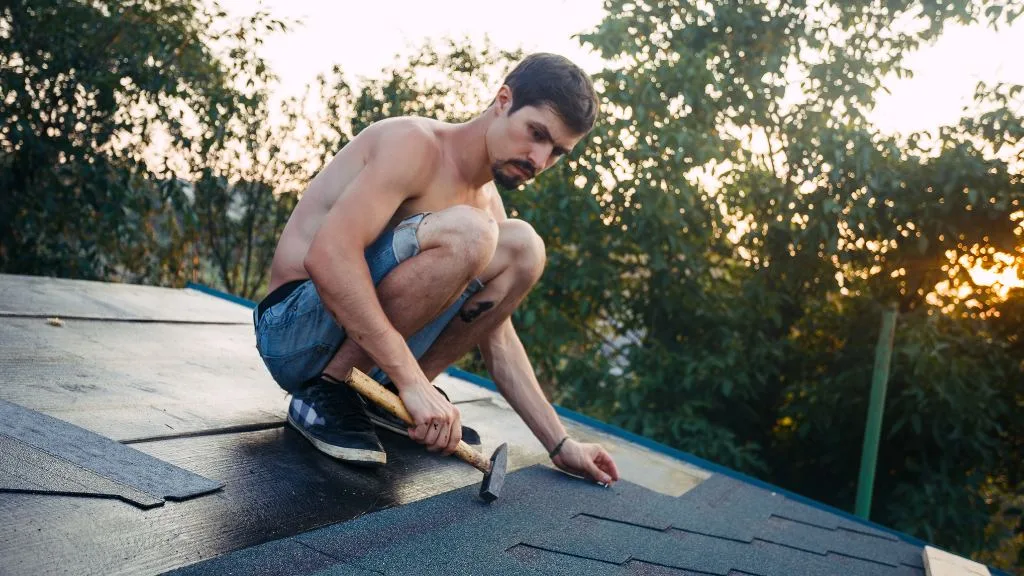
Conclusion
In conclusion, Modified Bitumen Roofing has its pros and cons. It is a popular choice for commercial and industrial buildings due to its affordability and durability. However, it also has some drawbacks that you should consider before making a final decision.
Pros
- Durability: Modified Bitumen Roofing is highly durable and can withstand harsh weather conditions, including heavy rain, strong winds, and even hail.
- Affordability: Compared to other roofing options, Modified Bitumen Roofing is relatively affordable. The materials used are inexpensive, and the installation process is quick and easy.
- Easy Installation: Modified Bitumen Roofing comes in rolled sheets that are easy to install. If damaged, it can be quickly and efficiently repaired using bitumen patches.
- Leak Resistant: Modified Bitumen Roofing is leak-resistant, making it a reliable option for flat roofs.
Cons
- Life Expectancy: Modified Bitumen Roofing has a life expectancy of 10-20 years, which is lower than other roofing materials.
- Maintenance: Modified Bitumen Roofing requires regular maintenance to ensure its longevity. You need to keep it clean and free of debris to prevent damage.
- Limited Style Options: Modified Bitumen Roofing offers limited style options compared to other roofing materials, which may limit your design choices.
Overall, Modified Bitumen Roofing is a reliable and affordable option for commercial and industrial buildings. However, it is essential to consider its drawbacks before making a final decision.
We hope this article has provided you with valuable insights into Modified Bitumen Roofing.
